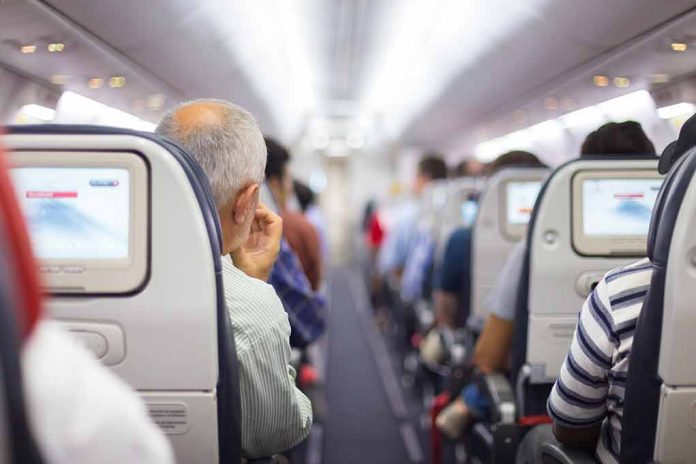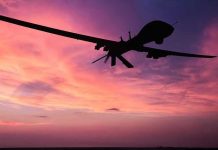
After a deadly Reagan National Airport crash claimed 67 lives, grieving families are demanding accountability from federal aviation authorities who failed to address 15,000 near misses that preceded the tragic collision between American Airlines Flight 5342 and an Army Blackhawk helicopter.
Key Takeaways
- A Senate hearing revealed the FAA and military officials knew about 15,000 near misses at Reagan National Airport over three years before the fatal crash occurred in January 2025.
- Acting FAA Administrator Chris Rocheleau admitted “something was missed” that could have prevented the collision between a commercial airplane and military helicopter.
- Legal representatives have filed pre-case claims against the federal government for up to $250 million on behalf of victims’ families.
- The NTSB has recommended immediate changes to helicopter routes near Reagan Airport and barring helicopter traffic over specific Potomac River areas.
- The FAA plans to implement new safety measures including hiring 2,000 more air traffic controllers and using AI to analyze airspace data.
Preventable Tragedy Revealed in Government Hearing
Family members of the 67 victims killed in January’s Reagan National Airport crash confronted federal aviation officials during a Senate subcommittee hearing that exposed alarming safety failures. The National Transportation Safety Board’s preliminary investigation discovered over 15,000 near-collision incidents between commercial aircraft and helicopters at Reagan National Airport from October 2021 through December 2024—information the Federal Aviation Administration possessed but failed to act upon before the fatal crash.
Acting FAA Administrator Chris Rocheleau made a striking admission during the hearing, acknowledging the agency’s failure to prevent the tragedy. “Something was missed at the DCA crash. I take that seriously. I take that on myself,” Rocheleau stated. The January 29 collision involved a PSA Airlines Bombardier CRJ700 operating as American Airlines Flight 5342 and an Army helicopter on a training mission, resulting in no survivors.
Grilled by US Senate over several air accidents involving United States airlines, Federal Aviation Authority said it would ramp up surveillance by hiring 2,000 trainees in 2025 for Air Traffic Control. #IO @FAANews @SenatePress https://t.co/BGH6ejJJGl
— INDIA OUTBOUND MAGAZINE (@indiaoutbound) March 28, 2025
Families Demand Accountability and Action
Dailey Crafton, who lost his brother in the crash, expressed frustration with ongoing safety lapses. “I was surprised at the lapses of safety protocols that led to this crash,” Crafton testified. “Specifically, even since the crash, certain safety measures that could have been simply implemented still have not been. Accountability is still not being taken by parties who should be held responsible.”
Clifford Law Offices has filed pre-case claims against the federal government seeking up to $250 million in damages. Attorney Tracy Brammeier, representing several victims’ families, criticized the systematic failures that led to the disaster. “The failure to share details about near midair collisions, or to perform trend analysis on the history of such incidents, or otherwise take action to address the high number of occurrences, is completely unacceptable. All entities who failed to take action must be held accountable to the victims’ families and to the flying public.”
Technical Failures and Regulatory Gaps
The investigation uncovered that some Army helicopters had stopped transmitting ADS-B Out data, a critical technology that helps prevent midair collisions by broadcasting aircraft positions. Senator Ted Cruz pressed Brigadier General Matthew Braman to release a policy memo dated August 9, 2024, entitled “ADS-B Out Off Operations in the National Airspace,” which military officials had previously declined to provide to Senate staff. Cruz warned of “further action” if the document wasn’t produced.
The hearing also revealed that false collision alarms at Reagan National had been triggered by improper testing of counter-drone technology by the Secret Service and Navy. In response to NTSB criticisms of helicopter routes around Reagan Airport, the Department of Transportation has agreed to implement immediate changes. The FAA announced plans to hire 2,000 additional air traffic controllers and is now using artificial intelligence and machine learning to analyze airspace data for potential safety issues.
Enhanced Safety Protocols and Ongoing Investigation
New regulations now require most aircraft operating around Reagan National Airport and downtown Washington D.C. to use ADS-B Out technology, with limited exceptions for high-security missions. The NTSB has recommended barring helicopter traffic over specific areas of the Potomac River and continues its investigation, including recovery of wreckage from the river. The agency aims to complete its investigation within a year.
While these safety improvements come too late for the 67 victims of January’s crash, affected families hope increased pressure and media attention will honor their lost loved ones by preventing future tragedies. Attorney Robert A. Clifford criticized the testimony from FAA and Army officials as inadequate and plans to file formal complaints after a mandatory waiting period, continuing the push for greater aviation safety in the nation’s capital.









